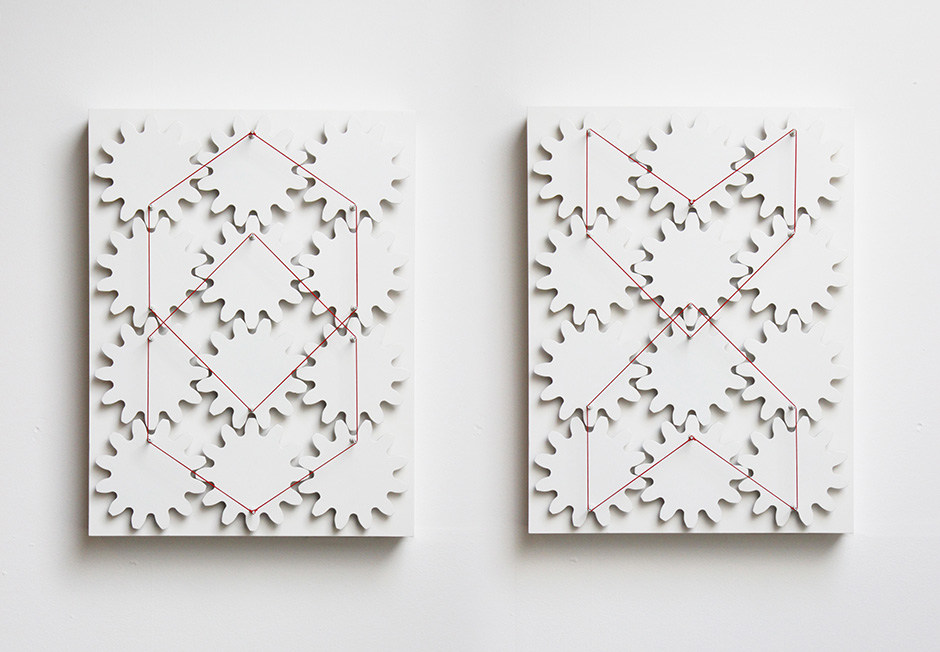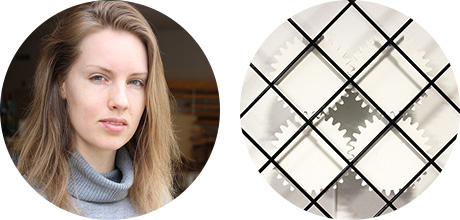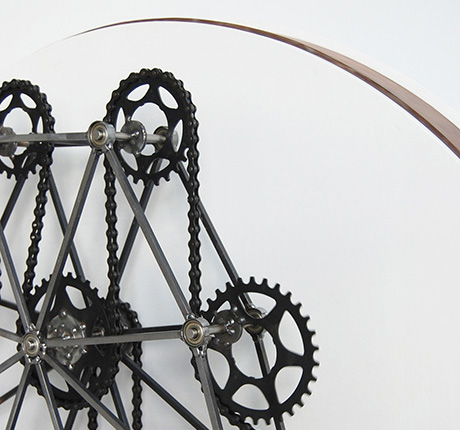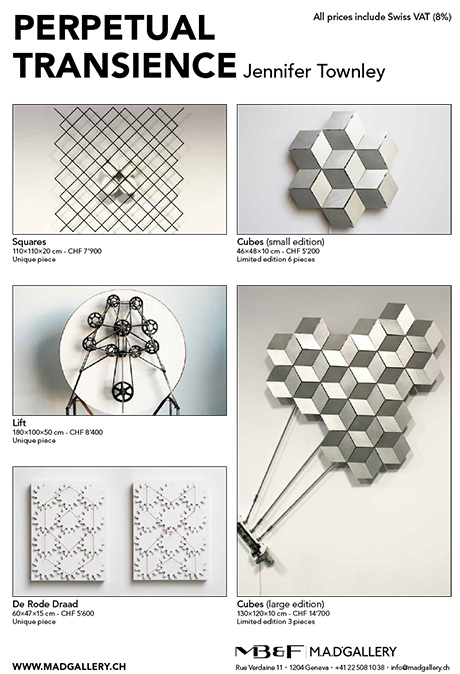
JENNIFER TOWNLEY
The MB&F M.A.D.Gallery is delighted to present the geometrically engineered kinetic art of Jennifer Townley.
Dutch artist Jennifer Townley qualified with a degree in art from the Royal Academy of Fine Art in The Hague in 2008 and has been working as an independent artist ever since, specialised in conceiving mechanical sculptures that move very slowly.
Townley's kinetic sculptures, created with meticulous attention to detail, generate repetitive movements and changing patterns designed to subtly interfere with the spectator's own patterns of thought. Her art features shapes and forms with constantly evolving patterns that are continually being distorted and transformed, the motions notable for their tranquillity.

Townley's art derives from her fascination with science, with an emphasis on physics, engineering, and mathematics. She is inspired by geometric patterns and the mathematical sketches of M. C. Escher. Captivated by how machines can convert relatively simple circular motions into quite complex nonlinear and chaotic patterns, she finds the robustness and apparent immortality of mechanical machines fascinating.
Besides her love for mechanics, Townley is also a student of how we perceive the world around us. Optical illusions are a good example of how our brains try to fit confusing visual information into known mental frameworks. Our attention is jarred by chaos while order generally brings us peace; Townley likes to create sculptures that produce repetitive movements with alternating moments of chaos and order, which result in the observer feeling alternating tension and relief, creating an almost hypnotic effect on the viewer.
PERPETUAL TRANSIENCE
“There is geometry in the humming of the strings, there is music in the spacing of the spheres” explained Pythagoras, as if the great mathematician himself was describing one of Townley’s hypnotizing works of kinetic art when he made this statement.
Gears and wheels propel her geometric sculptures into another realm, one where art is not only something to see, but also something to experience.
A native of the Netherlands, Townley has been enchanted by geometric shapes ever since childhood. Her interest led her to discover the works of fellow Dutchman, M. C. Escher, quite possibly the most famous graphic artist in the world. His “impossible” sketches and repetitive patterns inspired her to explore the geometric side of art.
Townley’s innate passion for geometry, guided by her fascination of engineering and science, makes for art that is half mechanical, half trompe l’oeil. It is at once mesmerizing, intriguing, and difficult to fathom. Above all, it's the sheer simplicity of her designs that make Townley's art so beautiful.

MECHANICAL SCULPTURES
The peaceful feeling these silent, moving sculptures emit is a quality that art so rarely bestows. At any angle, at any distance, Townley’s kinetic works are charming and thought provoking – and may be of particular interest to those interested in horology.
The allure of "Lift" centers around a ballet of sprockets, plunging and climbing along thin metal chains in a graceful, sweeping flow of mechanical energy. The larger cogwheel in the centre of the sculpture driving the black chain revolves at a constant speed. Due to their size differences, the smaller, non-centred cog wheels all move at different speeds, while brass weights pull down to guarantee tension in the chain. The entire structure moves in a somewhat unpredictable way, which is both fascinating to the eye and food for the soul.
"Squares" also follows a circular theme – but only where the motion of the gear wheels that moves the sculpture is concerned. Thinly carved wooden grids create a medley of geometrical shapes that slowly appear, disappear, and reappear as the interlocking gear wheels, reminding us vaguely of a mechanical watch movement as they make their revolutions.
Circular motion and meshing gear wheels seem to be a recurrent theme with Townley’s art, as seen in the rolling gears of the "De Rode Draad" sculpture, which plays with a red string seeming to eternally trace its own steps. As the gears strung with the red thread make their leisurely revolutions, the bright thread silently dances against the all-white backdrop to form geometrical shapes appearing and disappearing at various locations on the kinetic sculpture.
The "Cubes" sculpture seems like it should tessellate, however it emits a different, yet equally interesting feel thanks to shifting groupings of diamond shapes. The intermittent illusion of being sometimes cube-shaped and at times lozenge-shaped. A small electric motor with gear transmission moves the group of diamond shapes up and down, while simultaneously tilting them to and fro – all very, very slowly to emphasize its illusory three-dimensionality. Light reflected off the sculpture alternately illuminates them or turns them into shadows as part of a precisely timed, marionette-like dance.


